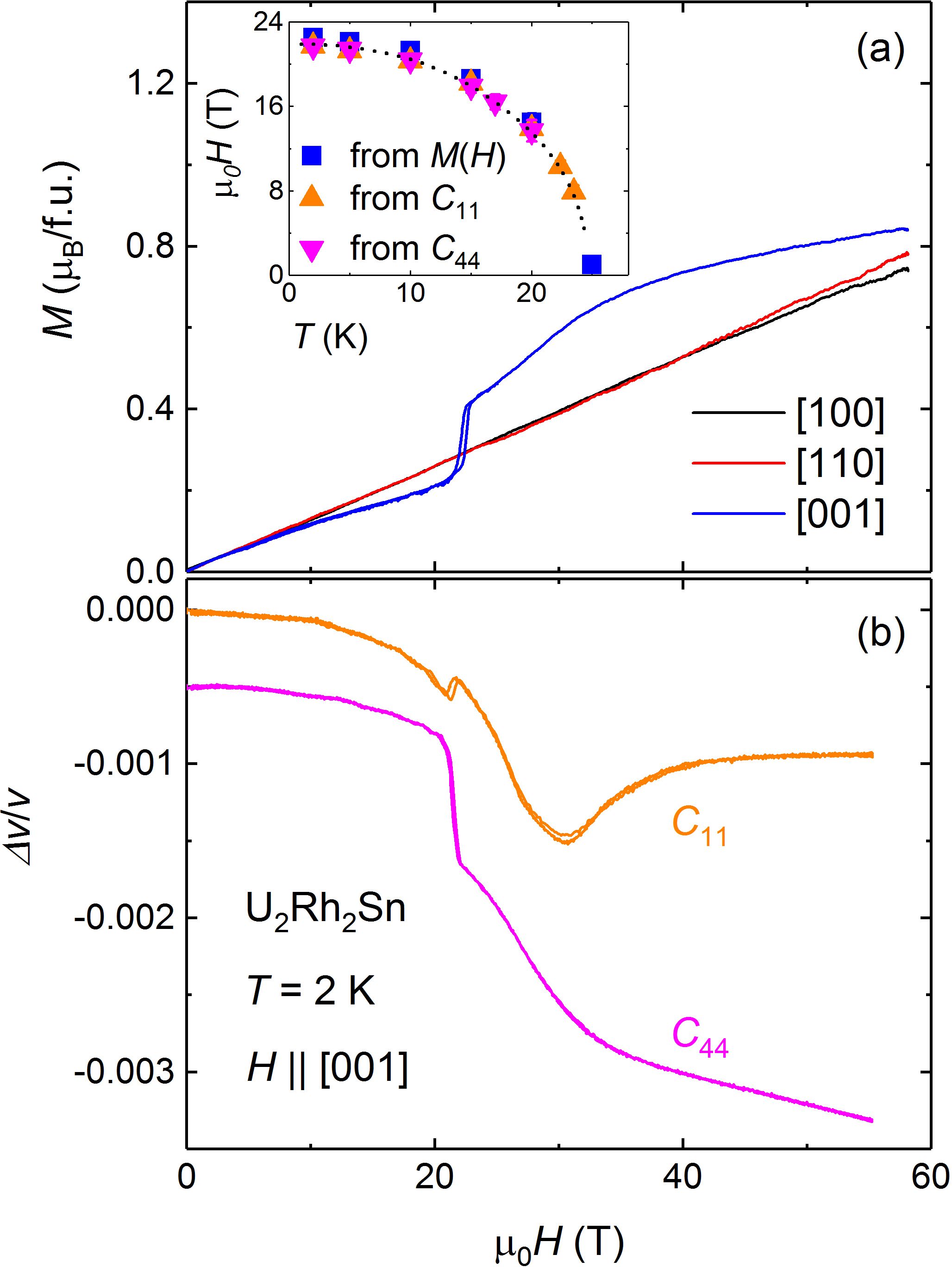Denis Gorbunov, HLD Dresden.
The physical properties of uranium-based intermetallic compounds depend strongly on the degree of localization of the 5f electrons. The extended character of the 5f states leads to a high sensitivity to external parameters. The pronounced spin-orbit interaction of uranium provides significant orbital polarization of the 5f states, strongly couples the direction of the uranium magnetic moments, and influences both the crystal and electronic structures. The direction of the uranium magnetic moments is determined by the bonding symmetry through a two-ion 5f-5f interaction, which often leads to extremely large anisotropy.
Usually, it is challenging to determine the degree of 5f electron localization. In a recent work, scientists from the Czech Republic, Japan, and Germany used a crystal-electric-field model to analyze their static- and pulsed-field magnetization and ultrasound data of U2 Rh2 Sn. The analysis strongly suggests that in this material the 5f electrons tend to be localized in the paramagnetic state.
U2 Rh2 Sn is a strongly anisotropic antiferromagnet with a Néel temperature of 25 K and uranium magnetic moments aligned along the [001] axis of the tetragonal crystal structure. For field applied along the easy direction, U2 Rh2 Sn shows a spin-flop-like transition at 22.5 T (Figure, panel a). The transition is accompanied by pronounced anomalies in the sound velocity as seen for the longitudinal, C11, and transverse, C44, elastic moduli in panel b of the figure. The sound velocity for C11 shows a sharp maximum at the magnetization jump followed by a broad minimum in the field range where the magnetization changes the slope. The sound velocity for C44 displays a step-wise softening at the transition and changes the slope near 30 T. The transition field decreases to zero upon approaching the Néel temperature (inset in panel a). Using their data in the paramagnetic state, the researchers determined the crystal-electric-field scheme. The analysis shows that quadrupolar interactions have to be taken into account to reproduce the field-dependent sound-velocity data.

Figure: (a) Magnetization and (b) relative sound-velocity changes for the acoustic modes C11 and C44 measured in pulsed magnetic fields up to 58 T at 2 K. The inset in panel a shows the magnetic phase diagram for field applied along the [001] axis.
Acoustic signatures of the phase transitions in the antiferromagnet U2 Rh2 Sn, D. I. Gorbunov, A. V. Andreev, I. Ishii, K. Prokeš, T. Suzuki, S. Zherlitsyn, and J. Wosnitza, Phys. Rev. B 101, 014408 (2020); Editors’ Suggestion.
DOI: https://journals.aps.org/prb/abstract/10.1103/PhysRevB.101.014408
Contact: http://d.gorbunov@.hzdr.de






